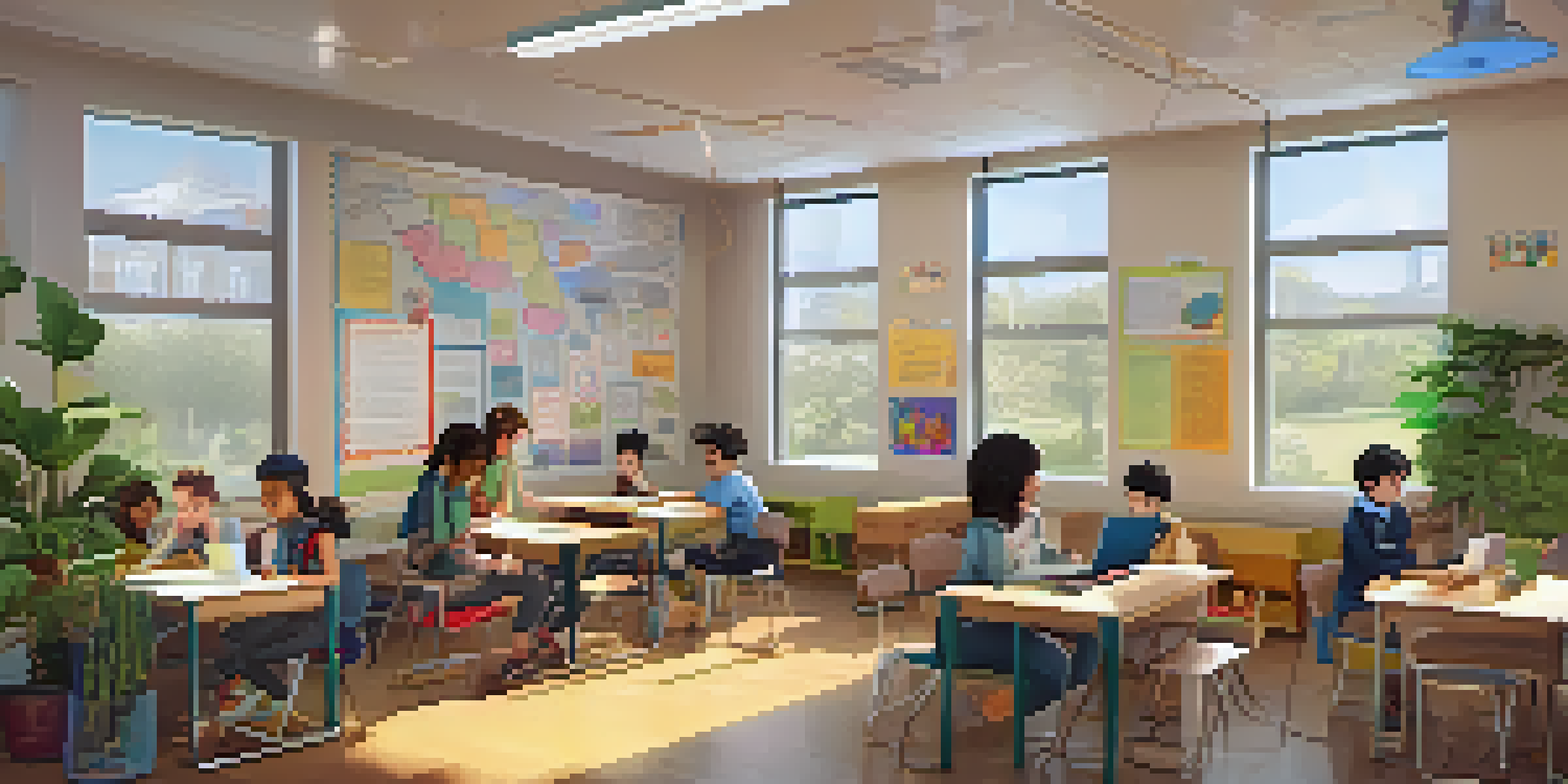Personalized Learning: Customizing Education for Every Student

Understanding Personalized Learning and Its Importance
Personalized learning is an educational approach that aims to tailor learning experiences to meet the unique needs of each student. Rather than following a one-size-fits-all model, it recognizes that every learner has different interests, strengths, and challenges. This approach empowers students to take charge of their education, fostering engagement and motivation.
Every student can learn, just not on the same day, or in the same way.
At its core, personalized learning emphasizes flexibility. Students can progress at their own pace, which can be particularly beneficial for those who may find traditional classroom settings overwhelming. This method also encourages teachers to become facilitators of learning, guiding students as they explore subjects that resonate with them.
As we shift towards a more personalized educational landscape, it’s crucial to understand its potential impact. Research indicates that personalized learning can lead to improved academic outcomes and deeper student engagement. By embracing this approach, we can create a more inclusive educational environment that caters to the diverse needs of all students.
Key Components of Personalized Learning
Personalized learning isn't just about pacing; it involves several key components that make it effective. These include student choice, flexible learning environments, and ongoing assessments. By giving students a say in their learning paths and allowing them to choose how they engage with content, we cultivate a sense of ownership and responsibility.

Flexible learning environments can take many forms, such as online platforms or blended learning spaces, where students can learn in a way that suits them best. For instance, a student who thrives in a quiet setting might prefer to study at home, while another may excel in collaborative group work. This adaptability can significantly enhance the learning experience.
Personalized Learning Empowers Students
This educational approach tailors experiences to each student's unique needs, boosting engagement and motivation.
Ongoing assessments play a vital role in personalized learning as well. Instead of relying solely on traditional tests, educators can use formative assessments to gauge understanding continuously. This approach allows for timely feedback and adjustments, ensuring that students receive the support they need to succeed.
Technology's Role in Personalized Learning
Technology has revolutionized personalized learning, providing tools that facilitate tailored educational experiences. Digital platforms enable educators to track student progress in real-time, adapting lessons to meet individual needs. For example, learning management systems can offer customized resources based on a student's performance and preferences.
Personalization is not a technology issue; it is a learning issue.
Additionally, educational software often includes adaptive learning technologies that adjust difficulty levels based on the learner's abilities. This means that a student struggling with a concept can receive additional practice, while another ready to advance can move forward without delay. Such innovations create a more dynamic and responsive learning environment.
Moreover, online resources and interactive content can engage students in new ways. Gamification, for instance, turns learning into a fun challenge, encouraging students to achieve goals while developing critical skills. By leveraging technology effectively, we can create a more personalized and engaging educational experience.
Challenges in Implementing Personalized Learning
While personalized learning holds great promise, it also comes with its own set of challenges. One significant hurdle is the need for adequate training for educators. Teachers must be equipped with the skills to design personalized learning experiences and utilize technology effectively. Without proper training, even the best intentions can fall flat.
Another challenge is ensuring equitable access to resources. Not all students have the same level of access to technology or supportive learning environments at home. This disparity can create gaps in learning opportunities, making it essential for schools to address these issues proactively.
Technology Enhances Learning Flexibility
Digital tools enable real-time tracking and adaptive resources, creating a dynamic learning environment.
Finally, measuring the effectiveness of personalized learning can be tricky. Standardized assessments may not fully capture a student's growth in a personalized setting. Educators need to develop new metrics and methods for evaluating student progress that reflect the unique pathways each learner takes.
Examples of Personalized Learning in Action
There are numerous examples of personalized learning successfully implemented in classrooms around the world. For instance, some schools have adopted project-based learning, where students choose projects that align with their interests and goals. This approach not only keeps students engaged but also allows them to develop critical thinking and collaboration skills.
Another example is the use of blended learning models, combining traditional classroom instruction with online learning. This format allows students to work on digital platforms at their own pace while still receiving guidance from teachers. Schools like Summit Public Schools have embraced this model, seeing positive results in student performance and satisfaction.
Moreover, some educational initiatives focus on competency-based learning, where students advance upon mastering skills rather than adhering to a fixed timeline. This method provides a more accurate picture of student understanding and fosters a growth mindset. These real-world examples illustrate the diverse ways personalized learning can be effectively applied.
The Role of Parents in Personalized Learning
Parents play a crucial role in the success of personalized learning initiatives. Their involvement can significantly enhance a child's educational experience by reinforcing learning at home and supporting school efforts. Open communication between educators and parents helps ensure that everyone is on the same page regarding a student's unique needs and goals.
By staying informed about their child's progress and challenges, parents can advocate for the necessary resources and support. They can also encourage their children to take an active role in their learning, fostering independence and self-advocacy skills. This partnership can create a more cohesive support system for students.
Challenges Require Support and Equity
Successful implementation of personalized learning depends on adequate teacher training and equitable access to resources.
Additionally, parents can help create a conducive learning environment at home, whether by setting aside dedicated study time or providing access to educational resources. When parents actively engage in their child's personalized learning journey, it can lead to more significant academic success and personal growth.
Future Trends in Personalized Learning
As we look to the future, personalized learning is likely to evolve with advancements in technology and educational practices. One emerging trend is the increased use of artificial intelligence (AI) to tailor learning experiences even further. AI can analyze student data to provide personalized recommendations for content and learning paths, making education more adaptive.
Another trend is the incorporation of social-emotional learning (SEL) into personalized learning frameworks. Recognizing the importance of emotional well-being, educators are increasingly focusing on developing skills like resilience, empathy, and self-awareness alongside academic skills. This holistic approach can create well-rounded individuals prepared for success in life.

Lastly, we may see a greater emphasis on community partnerships in personalized learning. Collaborations between schools, local businesses, and organizations can provide students with real-world learning opportunities and resources. By connecting education with the broader community, we can create more relevant and impactful learning experiences for students.